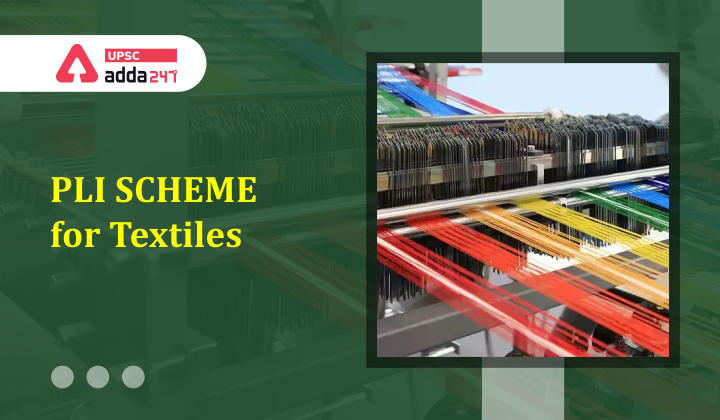Table of Contents
Relevance
- GS 2: Government policies and interventions for development in various sectors and issues arising out of their design and implementation.
Context
- Recently, PLI (Production Linked Incentive) Scheme for Textiles with a budgetary outlay of Rs. 10,683 crores, was approved by the Union cabinet.
Key points
- PLI scheme for Textiles is part of the overall announcement of PLI Schemes for 13 sectors made earlier during the Union Budget 2021-22, with an outlay of Rs. 1.97 lakh crore.
- With the announcement of PLI Schemes for 13 sectors, minimum production in India is expected to be around 37.5 lakh crore over 5 years and minimum expected employment over 5 years is nearly 1 crore.
Objective
- PLI scheme for Textiles will promote production of high value MMF (Man-Made Fibre) Fabric, Garments and Technical Textiles in country.
- The incentive structure has been so formulated that industry will be encouraged to invest in fresh capacities in these segments.
- This will give a major push to growing high value MMF segment which will complement the efforts of cotton and other natural fibre-based textiles industry in generating new opportunities for employment and trade, resultantly helping India regain its historical dominant status in global textiles trade.
- The Technical Textiles segment is a new age textile, whose application in several sectors of economy, including infrastructure, water, health and hygiene, defence, security, automobiles, aviation, etc. will improve the efficiencies in those sectors of economy.
- Government has also launched a National Technical Textiles Mission in the past for promoting R&D efforts in that sector. PLI will help further, in attracting investment in this segment.
Benefits
- It is estimated that over the period of five years, the PLI Scheme for Textiles will lead to fresh investment of more than Rs.19,000 crore.
- It will create additional employment opportunities of more than 7.5 lakh jobs in this sector and several lakhs more for supporting activities.
- The textiles industry predominantly employs women; therefore, the scheme will empower women and increase their participation in formal economy.
Way forward
- PLI for Textiles along with RoSCTL (Rebate of State and Central Taxes and Levies), RoDTEP and other measures of Government in sector e.g., providing raw material at competitive prices, skill development etc will herald a new age in textiles manufacturing.




 TSPSC Group 1 Question Paper 2024, Downl...
TSPSC Group 1 Question Paper 2024, Downl...
 TSPSC Group 1 Answer key 2024 Out, Downl...
TSPSC Group 1 Answer key 2024 Out, Downl...
 UPSC Prelims 2024 Question Paper, Downlo...
UPSC Prelims 2024 Question Paper, Downlo...
